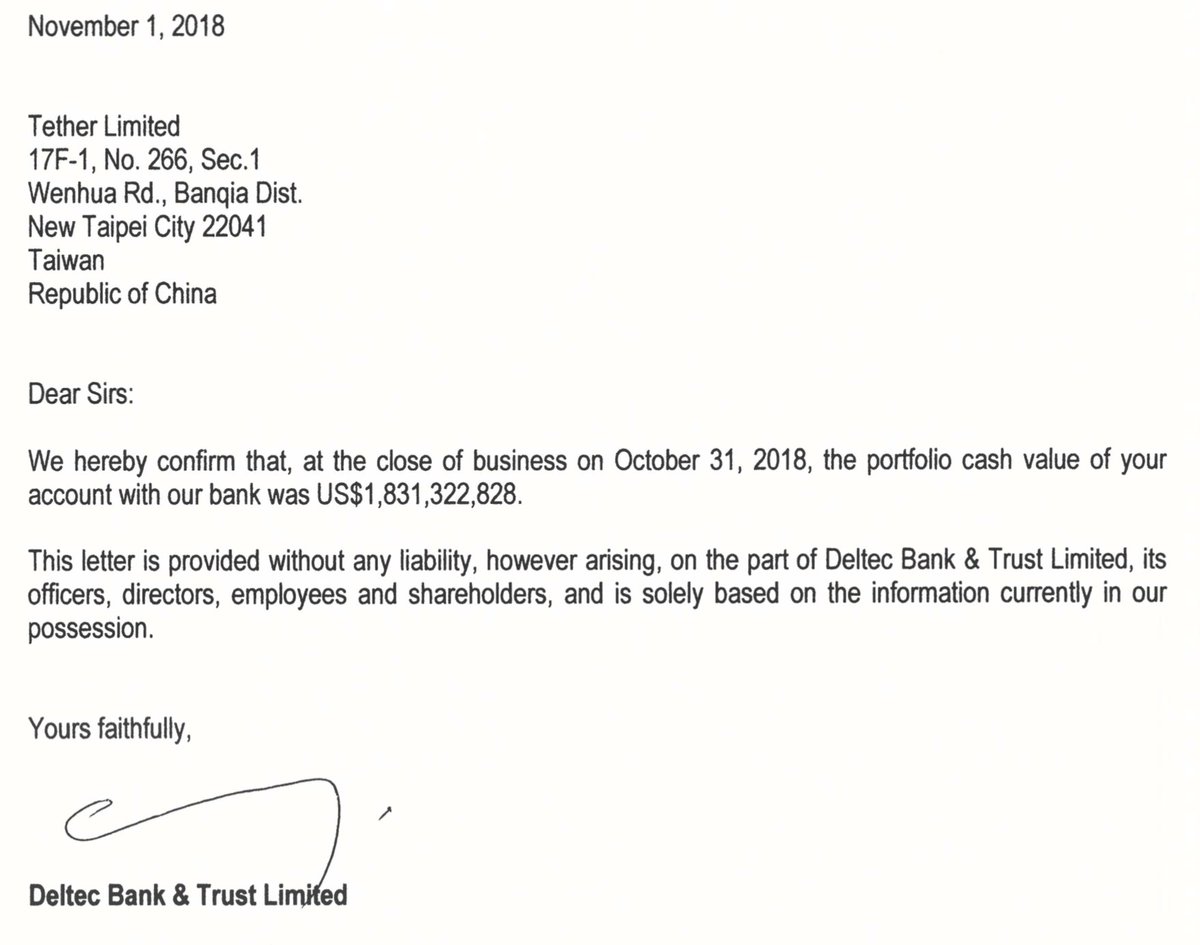(a) signed by an unknown individual;
(b) intentionally ambiguous in the second paragraph; and
(c) addressed to Tether only.
The letters are signed as follows:
Handwritten: "Law Firm Name"
Typed: "Law Firm Name"
(a) when I was an investment banker originating bond deals in the millions of $'s; and
(b) when I was being pitched by a potential customer prior to giving them banking services at my prior company.
The opinion letters in lieu of banking relations were definitely aggressive legal opinions.
(a) Addressed to Tether to mitigate a third party's ability to sue the bank due to reliance on potentially inaccurate statements (read: no privity of contract + no duty).
(b) Signed by no individual
Handwritten: [not legible]
Typed: "Bank Name"
3 - Intentionally ambiguous in the second paragraph, "This letter is provided without any liability, however arising, on the part of [Bank]."
theblockcrypto.com/tiny/tether-an…


This is incorrect reading of the letter.
(a) the letter's statements (read: bank is not liable for the contents of the letter);
(b) Tethers balances (read: are their liabilities/claims against tether's balances); or
(c) Bank related liabilities (read: did the bank only examine its claims against Tether or all third party claims against tether).
(a) statement on writing letters that say one thing but people interpret as another (read: designed for ambiguity);
(b) a statement on not standing by your word (read: designed to mitigate personal liability); and
(c) a statement on writing letters to one party while knowing a 3rd party will see the letter (read: letters written to encourage third party reliance but mitigate risk of suit by 3rd party)
Good lawyers draft for clarity.
Great lawyers know when to draft for ambiguity.
Remember that.
The Bank Letter to Tether says "portfolio cash value is ____." It does not say USD in the bank. It says "USD cash value."







